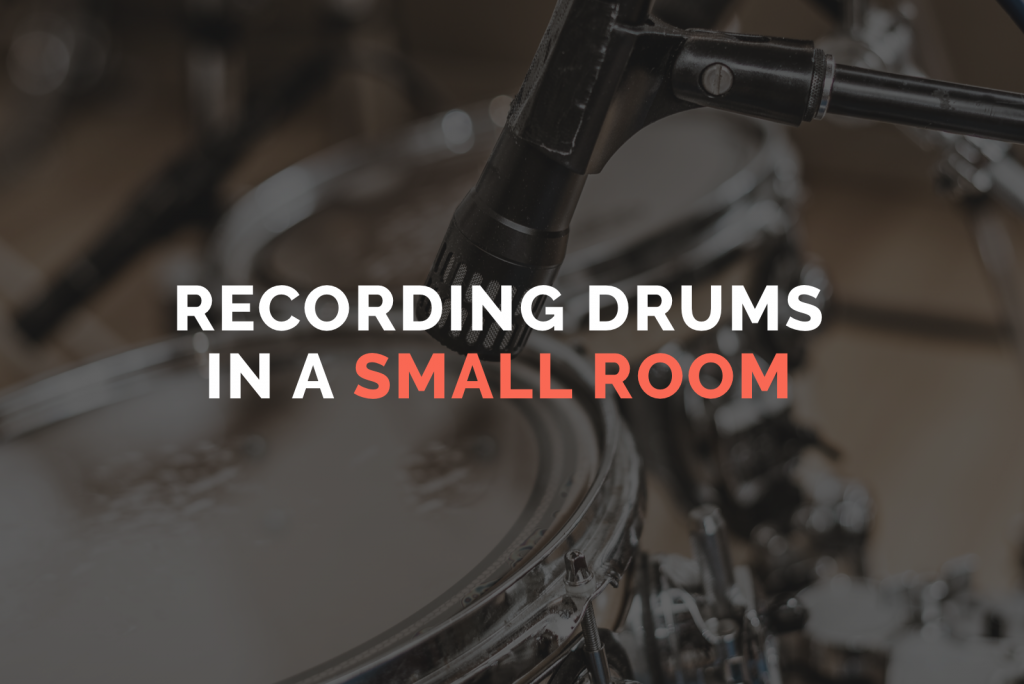Recording Drums in a Small Room
Wouldn’t it be amazing to have beautifully treated room in our homes that was perfect for recording acoustic sensitive instruments such as drums? The reality is that most of us with home studios have to make do with whatever is available, which is often a small untreated room. While it is infinitely easier to record drums in a sonically sound environment, it is possible to get good results from a small space with the right approach.
There have been many times over the years I have had to make a tiny space work and I’ve learned lots of lessons along the way, which I hope will be helpful to you.
The Kit
Whether you are in a small space or a large one, the main priority is getting the kit sounding the very best it can. By no means do you need to have an expensive drum set, you just need to know how to tune it. There are plenty of great resources out there showing you how and although it might take a little bit of time to truly understand how to tune a drum kit, it’s well worth it. Knowing how to make your kit sing is an invaluable skill.
Drumheads are also very important and have a huge impact on the overall sound. There is much to learn about different heads and how they interact with your drum set (and more specifically, the type of wood your drums are made out of) but put simply; coated heads will give you a warmer, more controlled tone and clear heads produce a brighter, less controlled sound. This is very much down to personal preference, and I would suggest you experiment and find what works best for your situation.
When recording drums at home, I almost always choose coated heads that have been slightly dampened (either with Moongel or a tea towel). I find this set up not only works better in a small room, but as a player, it’s much easier for me to control the overall sound.
The Player
Ideally you want a drummer to play to the room, and this is essential in smaller spaces. You want to minimize reflections and hitting drums very hard in a small, untuned environment will not only accentuate all the imperfections of the room, but it will also make the drums sound thinner. If possible, avoid hitting cymbals very hard as they will sound much harsher in a confined space. I usually record cymbal hits after I have recorded a main take. This way I can edit them as I like and also put all of my attention into hitting them appropriately for the space.
The Room
Experiment with the position of your kit in the room. It will sound very different from one location to another and it’s worth spending some time to find the right spot. Be mindful of low frequencies, which accumulate in corners. I have a 10×10 room at home and I find placing my kit in the center of the room works really well.
In beautiful sounding spaces you want to capture the room and make it part of the overall sound. In a small room, you want to do the complete opposite and reduce reflections as much as possible. I know many drummers who have built DIY acoustic panels and they are extremely affective. If you fancy giving this a go, there are many tutorials online that show you step by step how to build your own. Furniture always helps, as well as books on a bookcase and rugs on the floor and walls. If you have windows, I’d recommend getting curtains that you can close when you’re recording (the heavier the curtains the better). I like to put a small duvet or a square cushion from our sofa in front of the kick drum to act as a bass trap and I’m always amazed at how effective this is.
Mic Choice & Placement
When I’m tracking drums in a professional studio, I typically use 9 or 10 mics, but at home this is definitely not necessary. In fact, I would advise you use the least number of mics possible, as you will have to contend with phase issues in a smaller room. Mics I would consider essential are either one or two overheads, a kick and snare mic. You can absolutely get away with using only overheads and a kick mic, I have done this many times and it sounds great.
In a tiny room (like my 10×10 space) I would also recommend recording the drums in mono as there simply isn’t enough room for stereo overheads to be effective. I’ve had a lot of great results recording drums in mono and it leaves plenty of room for other instruments to be panned left and right in the mix.
Final Thoughts
When dealing with small, untuned rooms, it is often unconventional approaches that work best. Always trust your ears and remember the golden rule: If it sounds good, it IS good!

